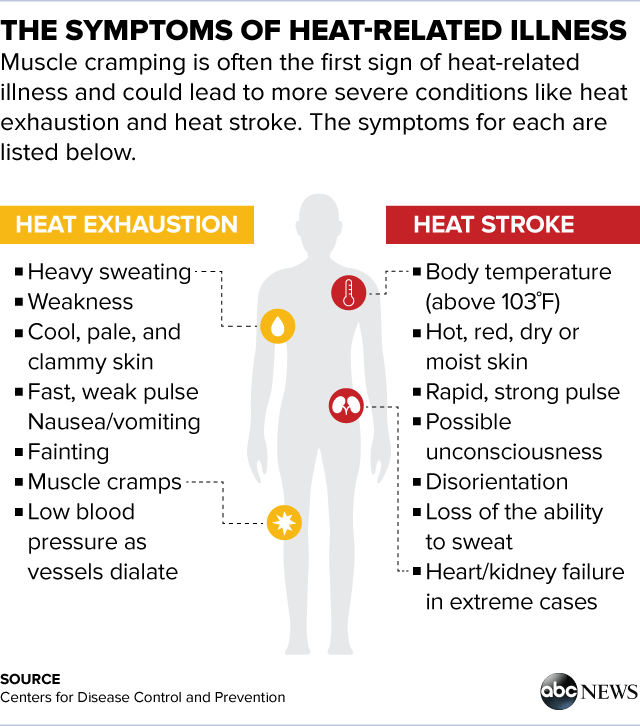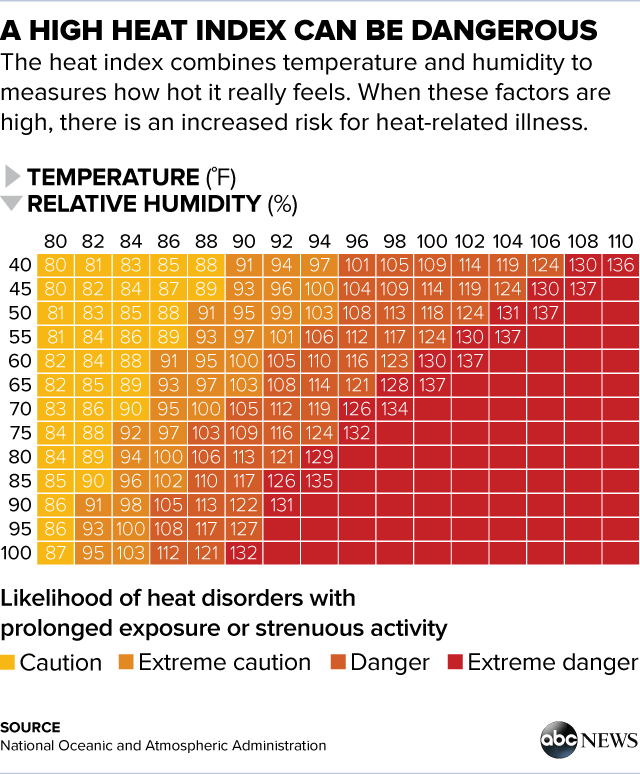Officials in both Iran and Iraq declared a mandatory holiday this month after temperatures soared far into the triple digits.
In Iraq, temperatures reached a sweltering 126 degrees and officials declared a mandatory holiday to try and protect people from succumbing to the heat. In Iran, the country faced possible record-breaking temperatures and high humidity that will leave residents feeling they are in temperatures as high as 151.2 degrees Fahrenheit, or 66.2 degrees Celsius.
The hottest temperature ever recorded was 56.7 degrees Celsius in Death Valley, but that did not account for humidity.
Such severe temperatures can be incredibly taxing on the body with people more at risk for serious complications including heat exhaustion and heat stroke.
While the old and young are most susceptible to scorching temperatures, such severe heat can be dangerous to anyone spending time out doors.
We asked experts to explain how heat affects the body.
Heat exhaustion is a precursor to heat stroke and can be a sign to get indoors and cooled down fast. While it may seem easy to figure out if someone is getting overheated, experts say that's not always the case. The U.S. Centers for Disease Control and Prevention have a list of key symptoms for both heat exhaustion and heat stroke we have included below.
Symptoms of heat exhaustion include:
- Heavy sweating
- Weakness
- Clammy skin
- Fainting
- Fast, weak pulse
- nausea/vomiting
Heat stroke symptoms can include:
- Disorientation
- Body temperature above 103-104
- Fast, strong pulse.
- Hot, red dry or moist skin
- Unconsciousness
Dr. Edmundo Mandac, director of the Emergency Medicine Clinical Operations, University Hospital Case Medical Center, said that it can be especially difficult to tell if older people are overheating because their body can lose the ability to react to extreme heat.
"They’re in a hot environment and there temperature awareness is not very good," said Mandac. "They don’t have warning signs of sweating."
He said people are usually determined to reach heat stroke if their body temperature reaches about 104 degrees Fahrenheit, but that for older people it may be lower.He explained that as the body has multiple ways of trying to lower the internal temperature.
"The interesting thing is the body has to release the heat somehow, the blood vessels dilate and open up and allow more blood to flow through," said Mandac. "The body thinks it can dissipate the heat…[but]their blood pressure drops."
As a result people can be more at risk for fainting with extreme heat. Heat exhaustion is also just a precursor to heat stroke, a potentially deadly complication as the body's temperature rises.
Mandac explained that heat stroke can be so bad that the body will just stop sweating.
"Things start clamping down [you're] losing fluids and your body says 'I don’t have enough fluids in my central system,'" said Mandac. He explained at this point the patient could be in a dire condition because the body has lost the ability to regulate the internal temperature.
Without any fluids to cool the body, Mandac said this is where things get "bad."
"It...can cause heart failure and cause kidneys to fail and when that happens basically those are the major systems," said Mandac, explaining the fatal risk of heat stroke. He said treatment includes putting icepacks in the underarms, neck and groin to lower the body temperature. In rare cases fluid is pumped into the stomach to lower internal temperature even faster.

